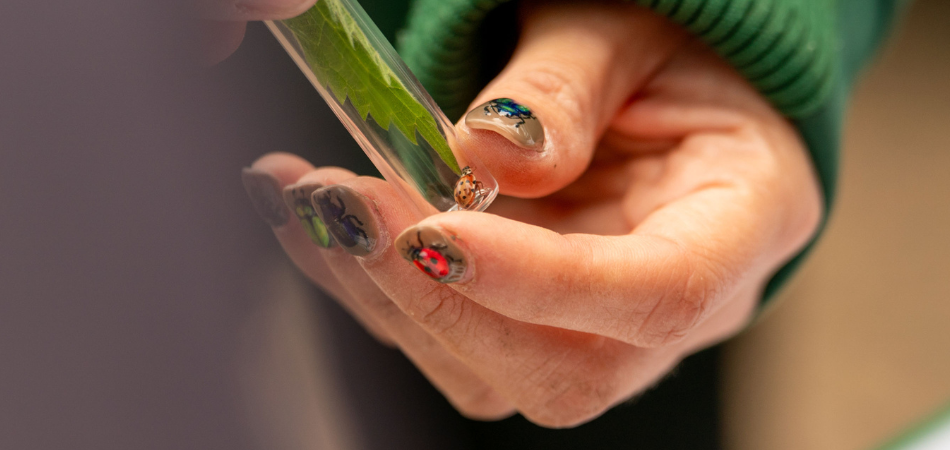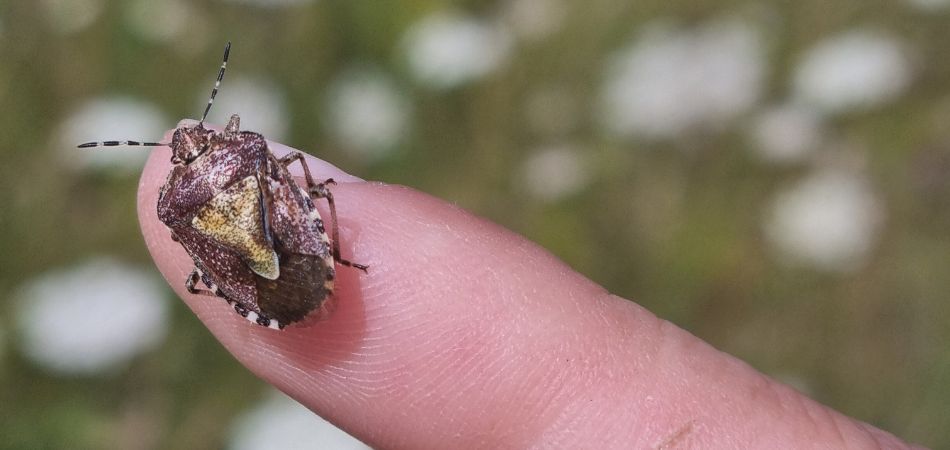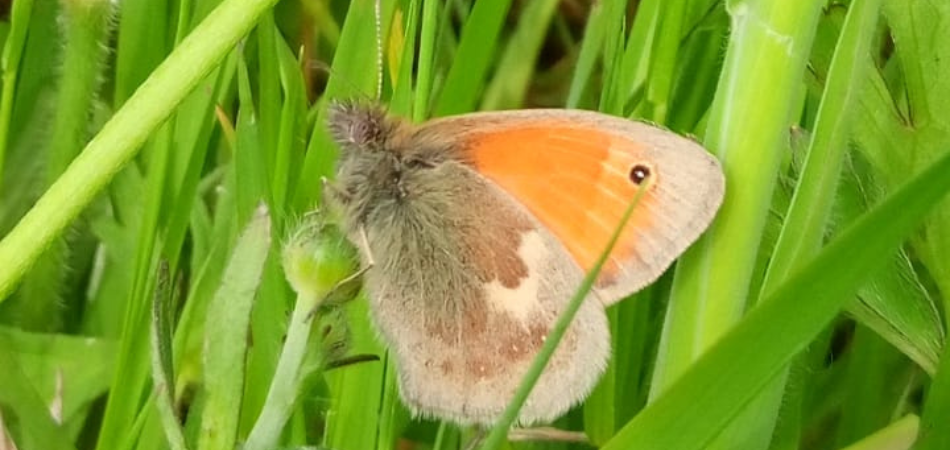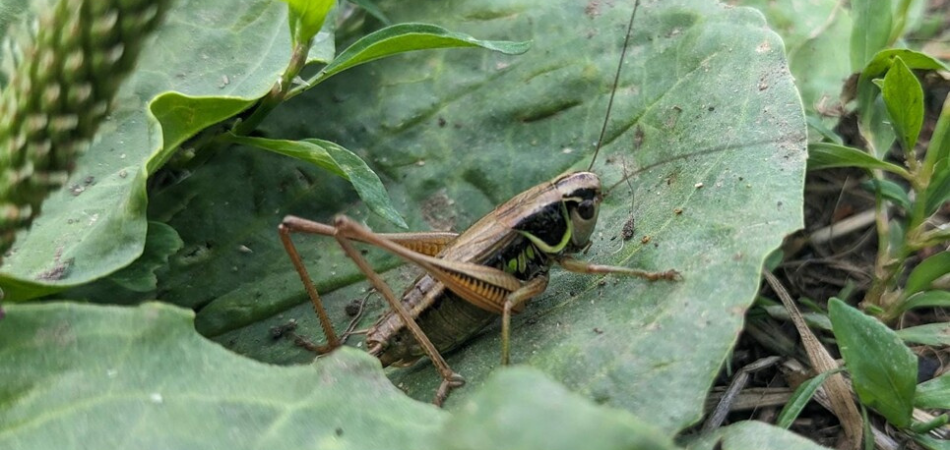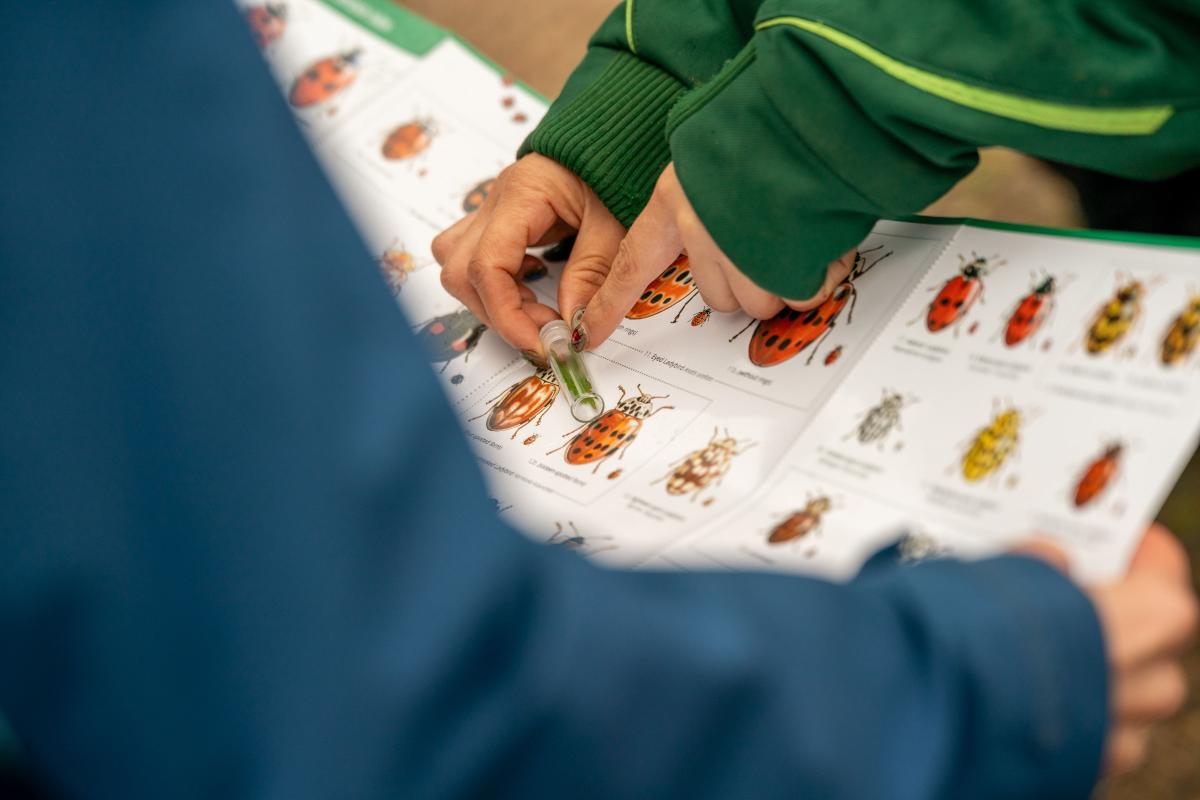
BioBlitz 2025: The results
Our fifth BioBlitz took place in the Forest at Spernal Park and Morgrove Coppice. Despite the challenging conditions we faced, with downpours of rain, and greyer, windier, and colder weather than our previous BioBlitz events, a total of 278 species were recorded within 24 hours with the help of staff and volunteers! The species included birds, invertebrates, molluscs, and plants. Take a look at what we discovered.
Recording wildlife in the Forest
A BioBlitz is an exciting race against time to record as many species of plants, animals, insects, and fungi as possible within a set location, usually over a 24-hour period. It’s a fantastic way to celebrate nature, engage people with the outdoors, and build a snapshot of local biodiversity.
This year’s BioBlitz was led entirely by our dedicated staff, volunteers, and wildlife experts, working together to capture another extraordinary snapshot of the rich and diverse wildlife found in our Forest.
Surveys and highlights
The following nature surveys were carried out during the event:
- Moth trapping with the BBC NDeavour Moth Group at Spernal Park (evening and morning sessions).
- Woodlouse and ladybird survey led by our Biodiversity Officer, Avery Hill.
- Aquatic invertebrate surveys of the woodland ponds conducted by Will Watson and Biodiversity Officer, Avery.
- Invertebrate recording by wildlife specialist Gary Farmer.
- Miscellaneous records contributed by all attending participants.
Although a butterfly survey and pollinator survey were planned, they sadly had to be cancelled due to poor weather conditions on the day.
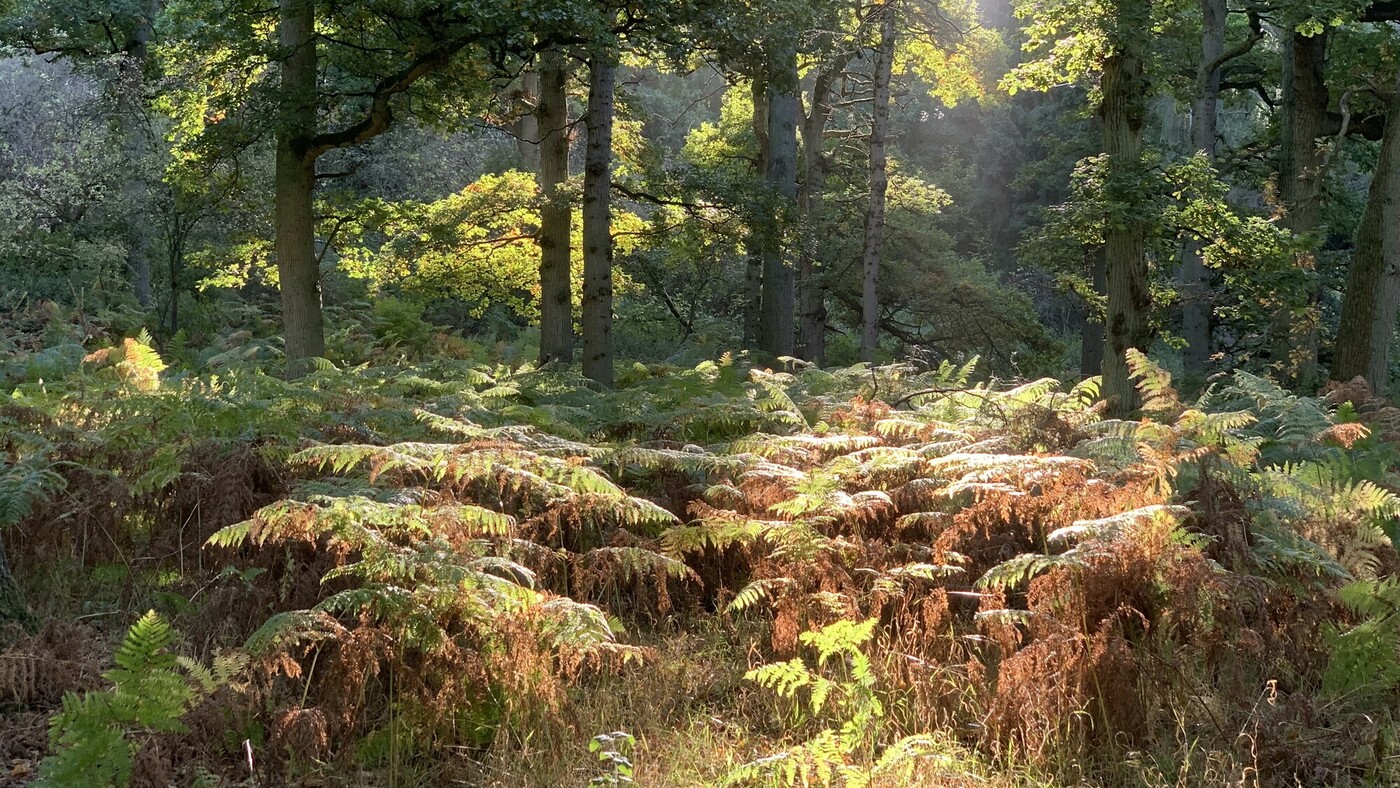
The BioBlitz location: Middle Spernal and Morgrove Coppice
This year’s BioBlitz focused mainly on Spernal Park, with additional recording in the neighbouring Morgrove Coppice.
Both are ancient woodlands in the Spernal area of the Forest, featuring a mix of deciduous and coniferous woodland. The two sites are separated by an area of young native broadleaf woodland, through which runs a wet woodland ditch, providing valuable wildlife habitat.
In Morgrove Coppice, two ponds were also surveyed, adding to the variety of habitats explored during the event.
Why BioBlitz matters
Events like BioBlitz not only give us an incredible opportunity to discover and document local wildlife, but they also highlight the importance of protecting and managing these habitats. Each record helps build a clearer picture of the Forest’s biodiversity, ensuring future generations can continue to enjoy these thriving ecosystems.
Here are our recordings from this year’s BioBlitz:
Birds
Species recorded: 21
Of the 21 species recorded, two were British Red List (marsh tit and spotted flycatcher) and one was a Schedule 1 species (goshawk). Marsh tit and spotted flycatcher are both specialists locally of ancient woodlands. A pair of spotted flycatchers were seen in Spernal Park, confirming that the species is still breeding at the site. Spotted flycatchers are a Red list species due to a decline in abundance of 93% in the period 1967-2022. The goshawk was heard calling in Spernal Park during the morning moth session. Goshawks are likely resident to the Spernal area with regular sightings by local birders, but breeding has not yet been confirmed.
Amphibians
Species recorded: 2
Both the common frog and common toad were recorded breeding at the Morgrove Coppice Pond, with tadpoles found, while in the only frog tadpoles were seen in Duckweed Pond.
Fish
Species recorded: 1
Three-spined stickleback were found in the northern point of the ditch. A total of three were noted.
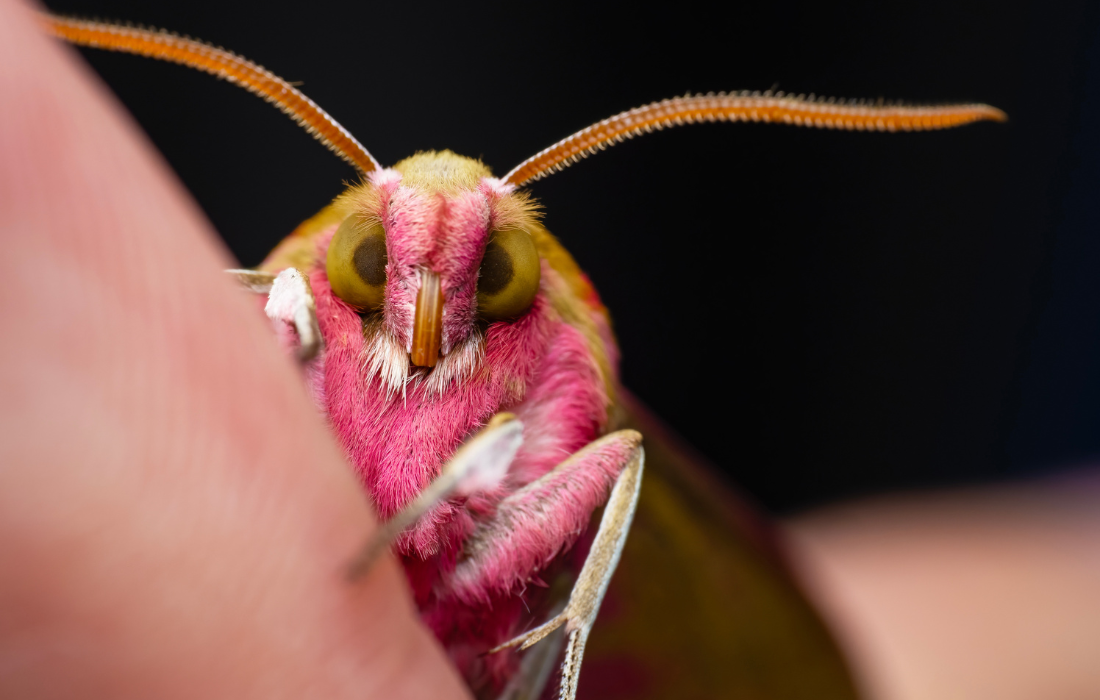
An elephant hawk moth; photo credit Lee Frost
Moths
Species recorded: 62
A total of 62 macro-moth species were recorded. Notable species include three hawk-moths - the elephant hawk-moth, small elephant hawk-moth and poplar hawk-moth. A delight to spot.
A cream-streaked ladybird in a survey tube
Beetles
Species recorded: 49
The rufous-shouldered longhorn beetle anaglyptus mysticus was found; this pretty longhorn beetle is only locally found through the Midlands. The jewel beetle agrilus cyanescens, another relatively uncommon species, was found on honeysuckle, the foodplant for its larvae.
And five ladybird species were recorded, the most interesting ladybird seen was the cream-streaked ladybird, a conifer specialist only locally distributed through England.
Out of the 49 beetle species recorded, 16 were aquatic beetles found during the aquatic invertebrate surveys.
A hairy shield bug on the finger of Biodiversity Officer Avery
Hemiptera (true bugs)
Species recorded: 34
No particularly rare hemiptera were found, although we saw an increase of true bugs by 22 species this year. A great outcome from the surveys. Six of the species discovered were shield bugs. Many species were found during the aquatic invertebrate surveys, including water cricket, water scorpion, pond skater, lesser water boatman, and greater water boatman.
Molluscs
Species recorded: 1
The lake orb mussel was found during the aquatic invertebrate survey.
Arachnids
Mites (Acari)
Species recorded: 2
Eriophyes similis and Phytoptus avellanae were both found by Gary Farmer. These can be easily found as they create galls on their host plants.
Spiders
Species recorded: 1
The crab spider (misumena vatia) was the single spider species recorded.
Small heath butterfly
Butterflies
Species recorded: 3
All of the species found were common - large skipper, speckled wood, and small heath were the three butterfly species recorded.
Crustaceans
Species recorded: 8
This included four common woodlice were recorded (common pill, rough, shiny and striped woodlice), as well as the two-spot water-hoglouse along the ditch and in Morgrove Coppice Pond.
The North American pond shrimp crangongyx pseudogracilis, the freshwater shrimp gammarus pulex and a single clam shrimp were also identified.
Diptera (True flies)
Species recorded: 19
With an increase of 13 species from last year, most were wetland species that were recorded, including the phantom cranefly ptychoptera contaminate and the hoverfly eristalinus sepulchralis.
A close-up of Rosel's bush cricket
Grasshoppers and crickets
Species recorded: 6
The six species recorded included dark bush-cricket, lesser marsh grasshopper, meadow grasshopper, Roesel’s bush-cricket, speckled bush-cricket and a conehead species
Hymenoptera (bees, wasps and ants)
Species recorded: 8
Four bumblebee species (common carder, buff-tailed, red-tailed and tree bumblebees) were seen, as well as the common wasp and hornet. A Ophion species of ichneumon wasp was found in a moth trap. The striped fern-sawfly (strongylogaster multifasciata) was the final Hymenopteran recorded; this sawfly requires bracken and male-fern, which its larvae feed on!
Odonata (Dragonflies and damselflies)
Species recorded: 1
Despite only one species being spotted, they were in healthy numbers with well over a dozen southern hawker larvae found during the aquatic invertebrate survey.
Plants and fungi
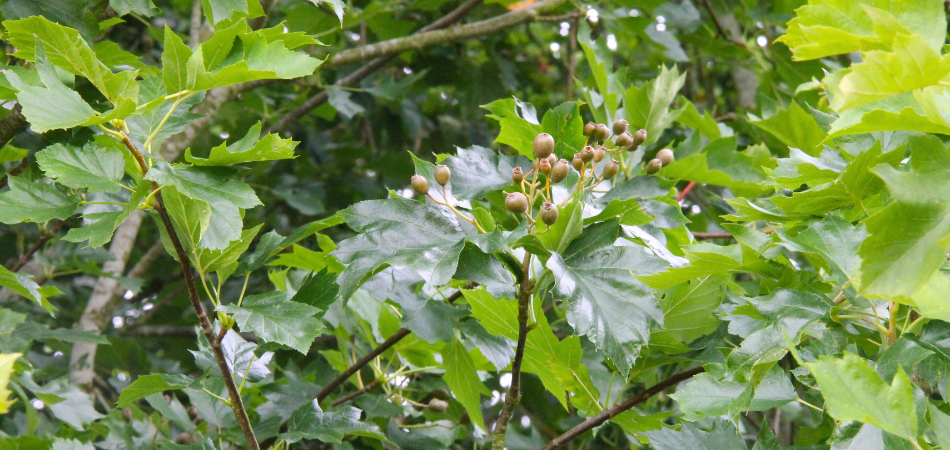
A wild service tree with checkers
Vascular Plants
Species recorded: 40
The Lily-of-the-Valley population within Morgrove Coppice is still present and may have expanded since it was rediscovered in 2023, although it wasn’t flowering at the time of BioBlitz. Ancient woodland indicator species included wild service tree, wood melick, and wood millet, which were all present.
Bryophytes:
Species recorded: 9
Six mosses and three liverworts were recorded. None of these were notable species although the moss tetraphis pellucida was a nice find with its characteristic ‘bird’s nest’ gemmae cups on top of many shoots.
Fungi
Species recorded: 1
A single fungus species, pocket plum (taphrina pruni), was found during the BioBlitz
Other recordings included:
Lacewings
Species recorded: 2
Chrysopa dorsalis and hemerobius humulinus were the two lacewings found. The chrysopa dorsalis was a particularly good find and is a rare species.
Mayflies (Ephemoptera)
Species recorded:2
A blue-winged olive mayfly nymph was found in both the Morgrove Coppice Pond and the north point of the ditch. Claret dun (leptophlebia vespertina) was discovered at the southern ditch survey
location.
Booklice (Psocoptera)
Species recorded:1
Graphopsocus cruciatus was the single booklouse found.
Caddisflies
Species recorded: 1
Two caddisfly larvae were found in the duckweed pond.
Annelid Worms
Species recorded: 2
An unidentified aquatic oligochaete worm was found in both the Morgrove Coppice Pond and the ditch. The leech helobdella stagnalis was recorded in both ponds and the ditch.
Scorpionflies (Mecoptera)
Species recorded: 1
Panorpa communis was the single scorpionfly found.
Myriapods
Species recorded 1:
One common species of centipede (lithobius variegatus) was spotted roaming around.
Creating a forest for wildlife
If you want to get hands-on in nature and take part in wildlife surveys, why not volunteer with the Forest?

